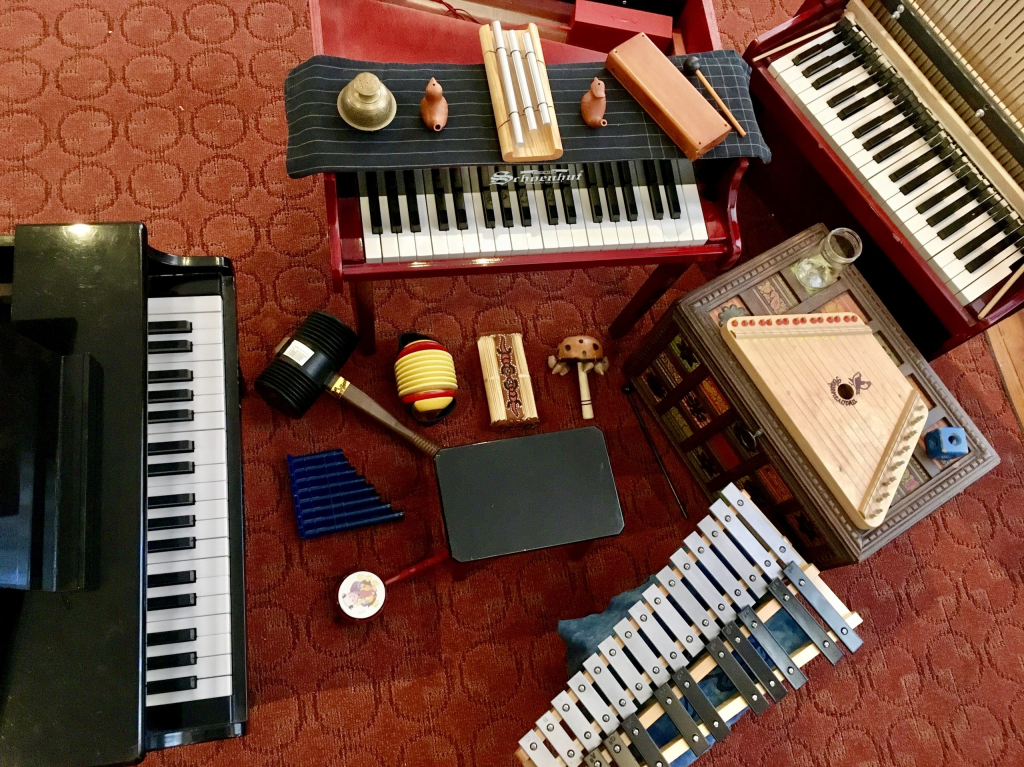The Rise of Electric Pianos: New Sounds for a New Era
Early Innovations: The Beginnings of Electric Pianos
The first electric pianos emerged in the late 1920s, using:
- Metal strings combined with magnetic pickups
- An amplifier and a loudspeaker to project the sound
These early instruments paved the way for a new era in music, allowing pianos to reach greater volumes and introduce new tonal possibilities.

The 1960s and 1970s: The Golden Age of the Electric Piano
By the 1960s and 1970s, electric pianos had become central to pop, rock, and jazz fusion.
The Fender Rhodes and Wurlitzer 210 became iconic with their:
- Metal tines (instead of traditional strings)
- Electromagnetic pickups, similar to electric guitars
The result was a warm, bell-like tone that could be amplified, manipulated with effects, and integrated into various styles of music—from funk to psychedelic rock.
Electric pianos remain rare in classical music but have become indispensable in live performance settings and recording studios.
Electronic Pianos: The Birth of Sound Synthesis
What Makes an Electronic Piano Different?
Unlike electric pianos, electronic pianos do not use physical strings or hammers.
Instead, they simulate the sound of a piano through:
- Oscillators and filters
- Sound synthesis technology
Electronic pianos require an external amplifier and speaker, though many models come with built-in amplification.
Practicing with headphones is a standard feature, ideal for musicians wanting to avoid disturbing others.
Digital Pianos: Realistic Sound in a Compact Form
Sampling the True Piano Experience
Digital pianos revolutionized the way musicians access authentic piano sound without the bulk of a traditional acoustic piano.
- They use high-quality digital samples of real pianos.
- Most digital pianos come with built-in amplifiers and speakers, making setup and practice easy.
Features often found on modern digital pianos include:
- Weighted keys for a realistic touch
- Sustain and soft pedals
- Multiple sound voices (organ, electric piano, violin, etc.)
- MIDI connectivity for integration with computers and other instruments
Advanced models, such as the Yamaha Clavinova series, utilize multi-gigabyte sample libraries featuring recordings of each note at multiple dynamic levels, resulting in stunning realism.
MIDI Integration and Modern Recording Possibilities
MIDI technology allows digital pianos to:
- Record performances to CD-ROMs or USB drives
- Output musical data for editing with software like Modartt’s Pianoteq
- Connect to synthesizers or virtual instruments for expanded creative options
MIDI captures how the note was played—its velocity, duration, and pressure—not just the sound, enabling dynamic editing and playback.
Exploring Other Unique Piano Variations
The Toy Piano: Small but Mighty
Introduced in the 19th century, the toy piano is a delightful miniaturized version of the full-sized instrument:
- Produces sound using round metal rods instead of strings
- Officially recognized by the U.S. Library of Congress as a distinct musical instrument (M175 T69 classification)
Though small, the toy piano has been featured in serious compositions and performances.
The Player Piano: Early Automation
Invented in 1863 by Henri Fourneaux, the player piano plays automatically using:
- Piano rolls punched with performance data
- Pneumatic systems to replay the performance
Modern equivalents, such as the Bösendorfer CEUS and Yamaha Disklavier, now utilize solenoids and MIDI technology instead of mechanical rolls.
Silent Pianos: Practice Without Disturbance
Silent pianos combine the feel of a traditional acoustic piano with silent practice capability:
- A hammer bar stops the hammers from striking the strings
- Allows silent playing with headphones — ideal for practicing without disrupting others
The Transposing Piano: Play in Any Key
Invented by Edward Ryley in 1801, the transposing piano features a lever that:
- Shifts the entire keyboard relative to the strings
- Let pianists play familiar finger patterns while changing the key signature
Although rare, this invention provided significant convenience for performers who needed to adapt quickly.
The Minipiano: Compact Innovation
Patented in 1934 by the Brasted brothers of Eavestaff Ltd., the minipiano:
- Has a braceless back and a soundboard below the keys
- Uses metal rods to transmit the hammer action to the strings
- Features front-access tuning, a unique convenience for maintenance
The first model, the Pianette, offered an innovative solution for those needing a compact piano.
The Prepared Piano: Expanding Sonic Possibilities
Prepared pianos, used in 20th and 21st-century contemporary music, are modified by:
- Inserting objects like rubber, paper, screws, or washers between the strings
- Changing the timbre dramatically to create new percussive or resonant sounds
Artists use these techniques to produce everything from harpsichord-like tones to deep, muted bass thuds.
Keyboard Carriers: Safely Moving Every Kind of Piano
Whether you’re moving a traditional grand piano, a vintage electric piano, a digital piano, or even a precious toy piano, Keyboard Carriers has the expertise you need.
We specialize in:
- Safe, professional piano moving services across Denver and the surrounding areas
- Custom crating and padding for delicate instruments
- Climate-controlled storage options for short- or long-term needs
With over 45 years of experience and 100,000+ successful moves, we’re the trusted choice for anyone serious about protecting their instrument.
Contact Keyboard Carriers for Expert Piano Moving and Storage
Protect your instrument’s value, craftsmanship, and legacy by choosing experienced, professional movers.
Trust Keyboard Carriers, Colorado’s most recommended piano moving service.
👉 Contact Us Today to schedule your piano move or storage service consultation!
